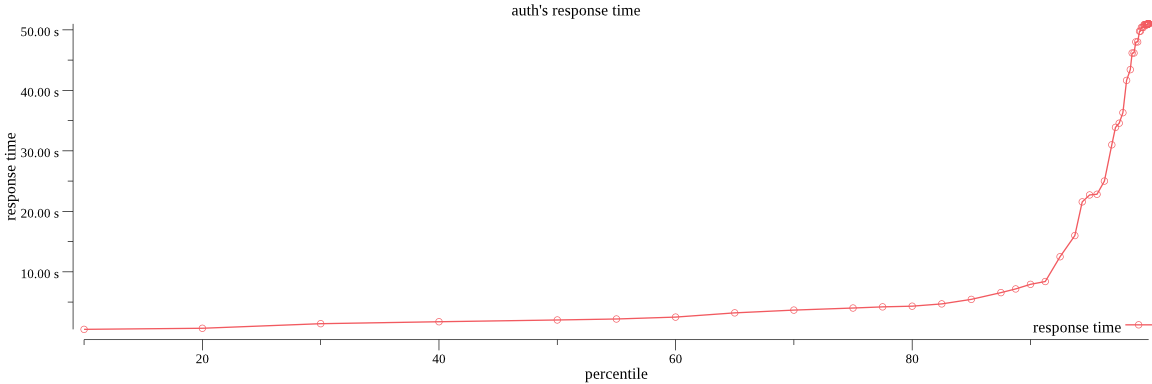At work we have started using opentracing with a zipkin backend and elasticsearch as storage layer. Zipkin creates per-day indices inside elasticsearch, meaning we can use the raw data to generate correct response time percentiles for individual services grouped by date.
After an initial draft which used a HdrHistogram on the client side Zachary Tong, an elastic.co employee, suggested on twitter to use the build-in HdrHistogram in elasticsearch instead.
The resulting code is a little shorter, and runs much faster due to the fact that we cut down the amount of data needed to be transfered.
Let’s take the latest version apart:
Our elasticsearch backend is running on AWS so we need to configure the elastic client to skip healthchecks:
client, err := elastic.NewClient(
elastic.SetURL("http://127.0.0.1:9200"),
elastic.SetHealthcheck(false),
elastic.SetSniff(false),
)
if client == nil || err != nil {
panic(fmt.Errorf("Failed retrieving an client: %#v", err))
}
Also note that our elasticsearch cluster is configured to be only accessible via v4 signed requests, which is achieved by running an aws signing proxy locally.
Now that we have a properly configured client we need to create an elasticsearch query which
allows us to look only at traces for a single service.
Opentracing by default adds a binaryAnnotation like this:
{
"endpoint": {
"serviceName": "service-a"
}
}
knowning that these binaryAnnotations will be set for all traces, we can create a query
which filters out all unwanted documents:
service := "service-a"
b := elastic.NewBoolQuery()
b.Must(elastic.NewMatchQuery("binaryAnnotations.endpoint.serviceName", service))
q := elastic.NewNestedQuery(
"binaryAnnotations",
b,
)
Now that we can filter documents by individual services we need to instruct elasticsearch to execute a percentiles aggregation.
The elastic client has support for percentiles aggregations, but these use TDigest by default. For HdrHistograms we need to
add a hdr key.
To do this in Go, we need to fulfill the elastic.Aggregation interface ourselves:
type Aggregation interface {
// Source returns a JSON-serializable aggregation that is a fragment
// of the request sent to Elasticsearch.
Source() (interface{}, error)
}
This can easily be achieved by struct embedding:
type hdrPercentilesAggregation struct {
*elastic.PercentilesAggregation
}
func (c *hdrPercentilesAggregation) Source() (interface{}, error) {
s, err := c.PercentilesAggregation.Source()
if err != nil {
return nil, err
}
m := s.(map[string]interface{})
percentiles := m["percentiles"].(map[string]interface{})
percentiles["hdr"] = map[string]interface{}{
"number_of_significant_value_digits": 3,
}
return m, nil
}
With this change we can instruct elasticsearch to calculate response time percentiles using HdrHistograms, knowing that opentracing-go adds a duration key:
agg := elastic.NewPercentilesAggregation()
agg.Field("duration")
sr, err := client.Search().Index(index).Query(q).Aggregation("duration", &hdrPercentilesAggregation{agg}).Do()
if err != nil {
return nil, err
}
res, found := sr.Aggregations.Percentiles("duration")
if !found {
return nil, fmt.Errorf("Missing aggregation %q from result set", "duration")
}
The requested percentiles are inside the res.Values map.
It’s straight forward to generate images from this data via the really great github.com/gonum/plot package - but see for yourself.
the gist contains a binary that generates csvs or pngs for a specific service & time range:
$ go run plot.go main.go -csv=false -img=true -prefix zipkin- service-a 2016-12-01 2016-12-20
